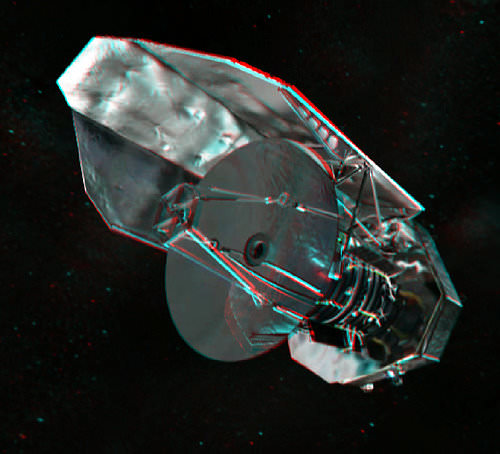[/caption]
Sometimes, in astronomy, the name of a thing describes it well; a parabolic mirror is, indeed, a mirror which has the shape of a parabola (an example of a name that does not describe itself well? How about Mare Nectaris, “Sea of Nectar”!). Actually, it’s a circular paraboloid, the 3D shape you get by rotating a parabola (which is 2D) around its axis.
The main part of the standard astronomical reflecting telescope – the primary mirror – is a parabolic mirror. So too is the dish of most radio telescopes, from the Lovell telescope at Jodrell Bank, to the telescopes in the Very Large Array; note that the dish in the Arecibo Observatory is not a parabolic mirror (it’s a spherical one). Focusing x-ray telescopes, such as Chandra and XMM-Newton, also use nested parabolic mirrors … followed by nested hyperbolic mirrors.
Why a parabolic shape? Because mirrors of this shape reflect the light (UV, IR, microwaves, radio) from distant objects onto a point, the focus of the parabola. This was known in ancient Greece, but the first telescope to incorporate a parabolic mirror wasn’t made until 1673 (by Robert Hooke, based on a design by James Gregory; the reflecting telescope Newton built used a spherical mirror). Parabolic mirrors do not suffer from spherical aberration (spherical mirrors cannot focus all incoming, on-axis, light onto a point), nor chromatic aberration (single lens refracting telescopes focus light of different colors at different points), so are the best kind of primary mirror for a simple telescope (however, off-axis sources will suffer from coma).
The Metropolitan State College of Denver has a cool animation of how a parabolic mirror focuses a plane wave train onto a point (the focus).
Universe Today has many articles on the use of parabolic mirrors in telescopes; for example Kid’s Telescope, Cassegrain Telescope, Where Did the Modern Telescope Come From?, Nano-Engineered Liquid Mirror Telescopes, A Pristine View of the Universe … from the Moon, Largest Mirror in Space Under Development, and 8.4 Metre Mirror Installed on Huge Binoculars.
Telescopes, the Next Level is an excellent Astronomy Cast episode, containing material on parabolic mirrors.

